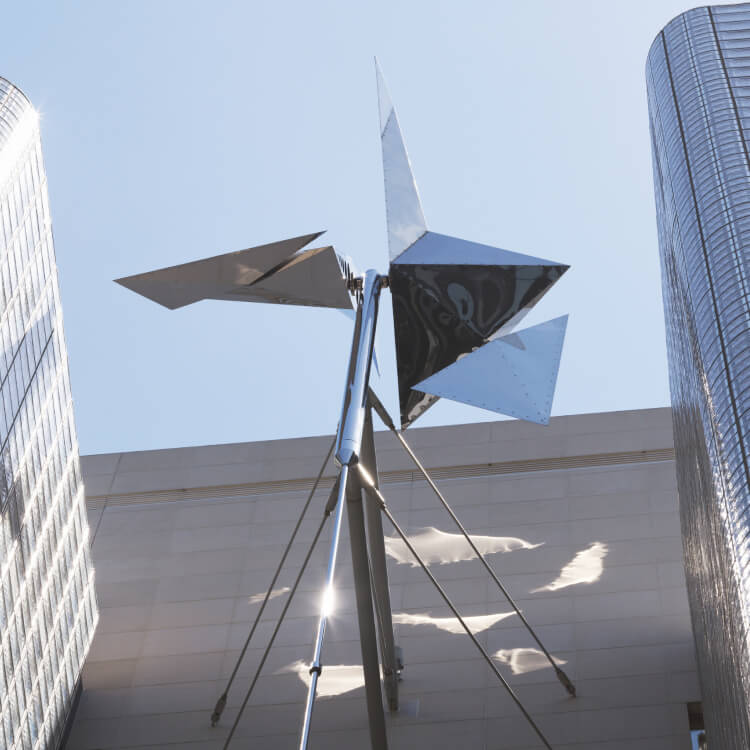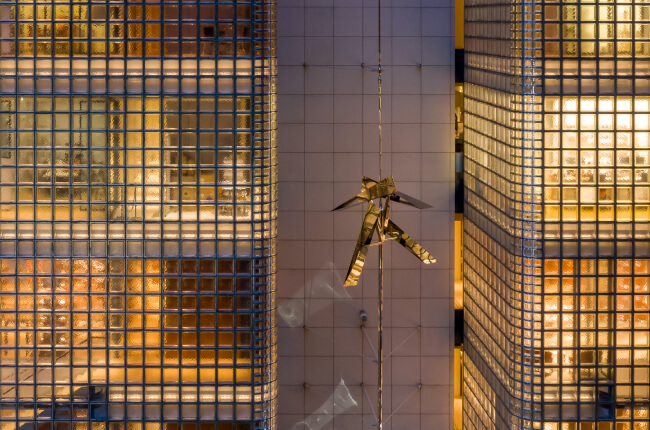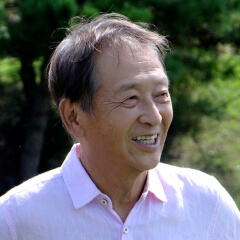
A device for making us think
about the Earth’s future
Susumu Shingu
Artist
Humanity’s greatest work of art, dedicated to the cosmos
When Ginza Maison Hermès was being built 23 years ago, my old acquaintance Renzo Piano—who designed the building—commissioned me to produce a sculpture for the project. This became Dedicated to the Universe. It’s still there hanging above the courtyard along Sony Street, twirling in the wind as it reflects light in all directions. The late Hermès chairman Jean-Louis Dumas once said that Hermès was about crafting the world’s finest objects by hand. Moved by these words, I decided to craft humanity’s greatest work of art and dedicate it to the cosmos—thus the title.


※Japanese Audio only


This sculpture
is not a decoration
Renzo once told me that he didn’t need art in his work, but he always made an exception for me. “Your work has function and movement and can enrich any space,” he said. That’s why I don’t consider this work a decorative piece of art. It is a mobile sculpture that creates movement from natural energies—wind, light, and gravity. It is a device for conveying that the laws of nature exist here, too, in the middle of the city. Earth has been blessed with such a rich, natural environment, and yet humanity is attempting to destroy it with their own hands. If you ever have the opportunity to gaze up at this sculpture, I hope you will remember how precious the Earth is.


※Japanese Audio only


Susumu Shingu
Shingu, an artist, was born in 1937. He is a graduate of Tokyo University of the Arts, where he studied painting. He has installed numerous mobile sculptures that move via wind, water, or attractive forces. They can be found in museums, parks, and street corners around the world. From 2000 to 2001, he organized the Wind Caravan art project that took him and his work to six countries around the world.
Back

